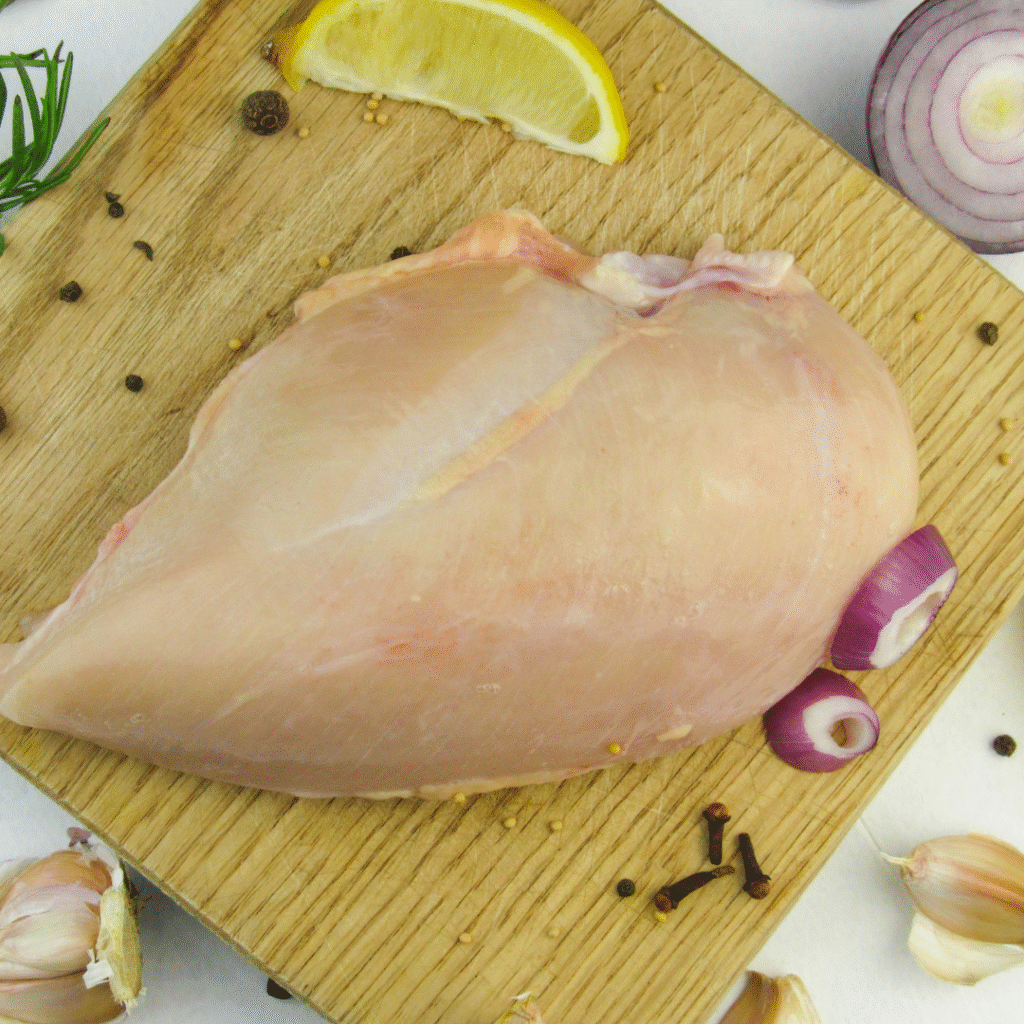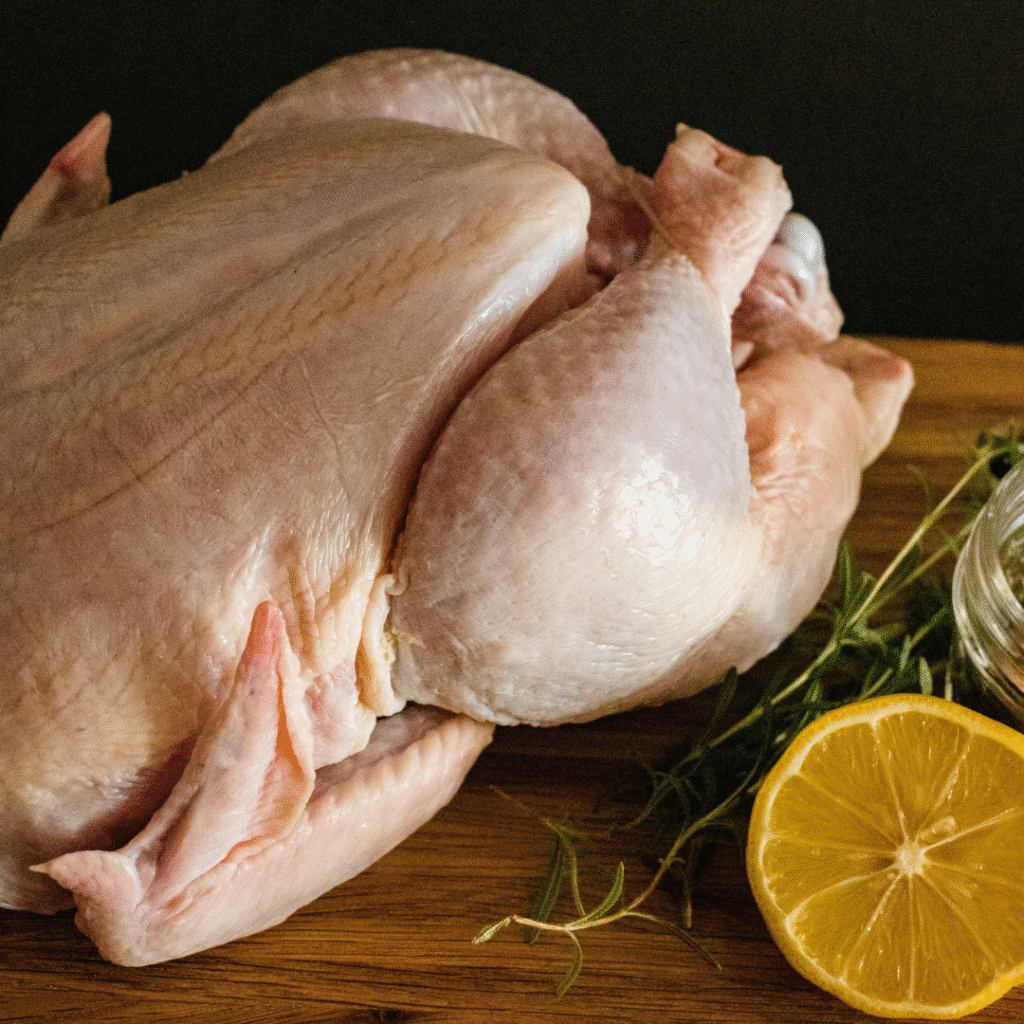When it comes to healthy eating, chicken breast is one of the most popular protein sources around the world. Known for being lean, versatile, and easy to prepare, it has earned a spot in countless kitchens, meal plans, and diet programs. Whether you are an athlete looking to build muscle, someone who wants a lighter meal option, or simply curious about the nutritional benefits of chicken breast, understanding its nutrition facts can help you make informed food choices.
This article provides a complete breakdown of the nutritional profile of chicken breast, its benefits, how it compares to other protein sources, and tips on preparing it in a healthy way.
Why Chicken Breast Is a Popular Choice
Chicken breast is widely consumed because it is low in fat and high in protein. Unlike other cuts of chicken, such as thighs or wings, chicken breast offers a leaner option with fewer calories per serving. It’s also incredibly versatile in cooking—you can grill, bake, roast, boil, or stir-fry it with endless flavor combinations.
 Another reason for its popularity is its ability to fit into a variety of dietary preferences. From low-carb and high-protein diets to balanced meal plans, chicken breast adapts easily, making it a staple ingredient for many.
Another reason for its popularity is its ability to fit into a variety of dietary preferences. From low-carb and high-protein diets to balanced meal plans, chicken breast adapts easily, making it a staple ingredient for many.
Nutrition Facts for Chicken Breast (Per 100 Grams, Skinless and Cooked)
To better understand what makes chicken breast such a healthy option, let’s look at the nutrition facts based on a standard 100-gram serving of skinless, cooked chicken breast:
-
Calories: 165
-
Protein: 31 grams
-
Fat: 3.6 grams
-
Saturated Fat: 1 gram
-
Carbohydrates: 0 grams
-
Fiber: 0 grams
-
Sugars: 0 grams
-
Cholesterol: 85 milligrams
-
Sodium: 74 milligrams
-
Potassium: 256 milligrams
These values can vary slightly depending on the cooking method, but overall, chicken breast consistently remains low in fat and carbohydrates while being packed with protein.
Macronutrient Breakdown
Protein Content
The biggest nutritional highlight of chicken breast is its protein content. With over 30 grams of protein per 100 grams, it is one of the best animal-based protein sources available. Protein is essential for repairing tissues, supporting muscle growth, producing enzymes and hormones, and maintaining overall health.
For people who exercise regularly or want to build lean muscle mass, chicken breast provides the high-quality protein necessary for recovery and strength development.
Fat Content
Chicken breast is considered a lean cut because it contains less fat compared to thighs, drumsticks, or wings. Most of its fat content is unsaturated, which is a healthier type of fat. By choosing skinless chicken breast, you further reduce the fat and calorie content, making it a heart-friendly option.
Carbohydrates
Chicken breast contains virtually no carbohydrates, which makes it suitable for low-carb, keto, or carb-controlled diets. Its zero-carb nature also makes it a flexible protein source that can be paired with a wide variety of vegetables, grains, or legumes.
Micronutrients in Chicken Breast

Beyond protein and fat, chicken breast provides several essential vitamins and minerals that play an important role in maintaining overall health.
-
Vitamin B6: Important for brain development, immune function, and converting food into energy.
-
Niacin (Vitamin B3): Helps with digestion, skin health, and energy production.
-
Phosphorus: Supports healthy bones, teeth, and cell function.
-
Selenium: Acts as an antioxidant that protects the body from oxidative stress and supports thyroid function.
-
Potassium: Helps regulate fluid balance, nerve function, and muscle contractions.
-
Riboflavin (Vitamin B2): Plays a role in energy metabolism and maintaining healthy skin and eyes.
These micronutrients add to the overall health benefits of including chicken breast in your diet.
Health Benefits of Chicken Breast
Supports Muscle Growth and Repair
Thanks to its high protein content, chicken breast is an excellent choice for athletes, bodybuilders, or anyone looking to gain lean muscle mass. Protein helps repair micro-tears in muscles caused by exercise, allowing them to grow stronger over time.
Helps with Weight Management
Because it is low in calories and fat while being high in protein, chicken breast can help with satiety. Protein-rich foods keep you full longer, reducing unnecessary snacking and overeating. This makes chicken breast a useful food for people who want to manage their weight effectively.
Boosts Metabolism
Protein has a higher thermic effect compared to fats and carbohydrates, meaning the body burns more calories while digesting it. Including chicken breast in your meals can slightly increase your daily energy expenditure.
Supports Heart Health
Skinless chicken breast contains less saturated fat compared to red meat, making it a heart-healthy protein option when consumed as part of a balanced diet. Choosing healthy cooking methods like grilling, baking, or steaming further enhances these benefits.
Provides Essential Nutrients
The presence of vitamins such as B6, niacin, and minerals like phosphorus and selenium contribute to energy metabolism, stronger bones, and better immune defense.
Chicken Breast vs. Other Protein Sources
To appreciate the value of chicken breast, it’s useful to compare it with other protein-rich foods:
-
Chicken Thighs: Higher in fat and calories but still a good protein source. Preferred for richer flavor.
-
Beef: Provides more iron and zinc but often higher in saturated fat and calories compared to chicken breast.
-
Fish: Rich in omega-3 fatty acids but may be lower in protein per serving.
-
Plant-Based Proteins (like beans or lentils): Contain fiber and are lower in fat, but usually provide less protein per serving compared to chicken breast.
Chicken breast strikes a balance by being high in protein, low in fat, and versatile, making it one of the most reliable choices.
Cooking Methods and Their Impact on Nutrition
The way chicken breast is cooked can affect its nutritional value. For example:
-
Grilling or Baking: Preserves nutrients without adding extra fat, making these among the healthiest methods.
-
Boiling or Steaming: Keeps calories low and retains most of the vitamins and minerals.
-
Frying: Adds extra fat and calories, which can reduce the health benefits of chicken breast.
-
Sautéing: Can be healthy if done with small amounts of olive oil or other healthy fats.
Choosing simple, low-fat cooking methods ensures you get the most nutritional value from your chicken breast.
Portion Sizes and Serving Suggestions
A typical chicken breast weighs between 150 to 200 grams. That means one breast can provide around 40–60 grams of protein depending on its size. For most adults, a serving of 85–100 grams (about 3–4 ounces) is considered appropriate for a meal.
Chicken breast can be paired with:
-
Steamed or roasted vegetables for a light and balanced meal
-
Whole grains like brown rice, quinoa, or oats for added fiber and energy
-
Leafy greens and healthy fats like avocado for nutrient-rich salads
-
Stir-fried with mixed vegetables for a quick and satisfying dish
Tips for Buying and Storing Chicken Breast
-
Choose fresh or frozen: Both options are nutritious, but ensure frozen chicken is properly sealed to avoid freezer burn.
-
Go skinless: This reduces fat content and calories.
-
Check labels: If buying packaged chicken, look for options with minimal added sodium.
-
Store safely: Refrigerate raw chicken immediately and cook it within 1–2 days, or freeze it for longer storage.
-
Cook thoroughly: Chicken should be cooked to an internal temperature of 165°F (74°C) to ensure it’s safe to eat.
Is Chicken Breast Right for Everyone?
Chicken breast is a generally safe and nutritious choice for most people. It is especially suitable for those looking to increase their protein intake while keeping calories and fat in check. However, vegetarians, vegans, or individuals with specific dietary preferences might prefer plant-based protein alternatives.
Final Thoughts
Chicken breast remains one of the most reliable, nutritious, and versatile protein sources available. With its high protein content, low fat levels, and beneficial vitamins and minerals, it can play a key role in supporting muscle growth, managing weight, and maintaining overall health.
By choosing healthy cooking methods and pairing chicken breast with nutrient-rich sides, you can create meals that are not only delicious but also balanced and beneficial to your body. Whether you are looking to fuel workouts, improve your diet, or simply enjoy a lean source of protein, chicken breast is a food that consistently delivers on both nutrition and taste.




